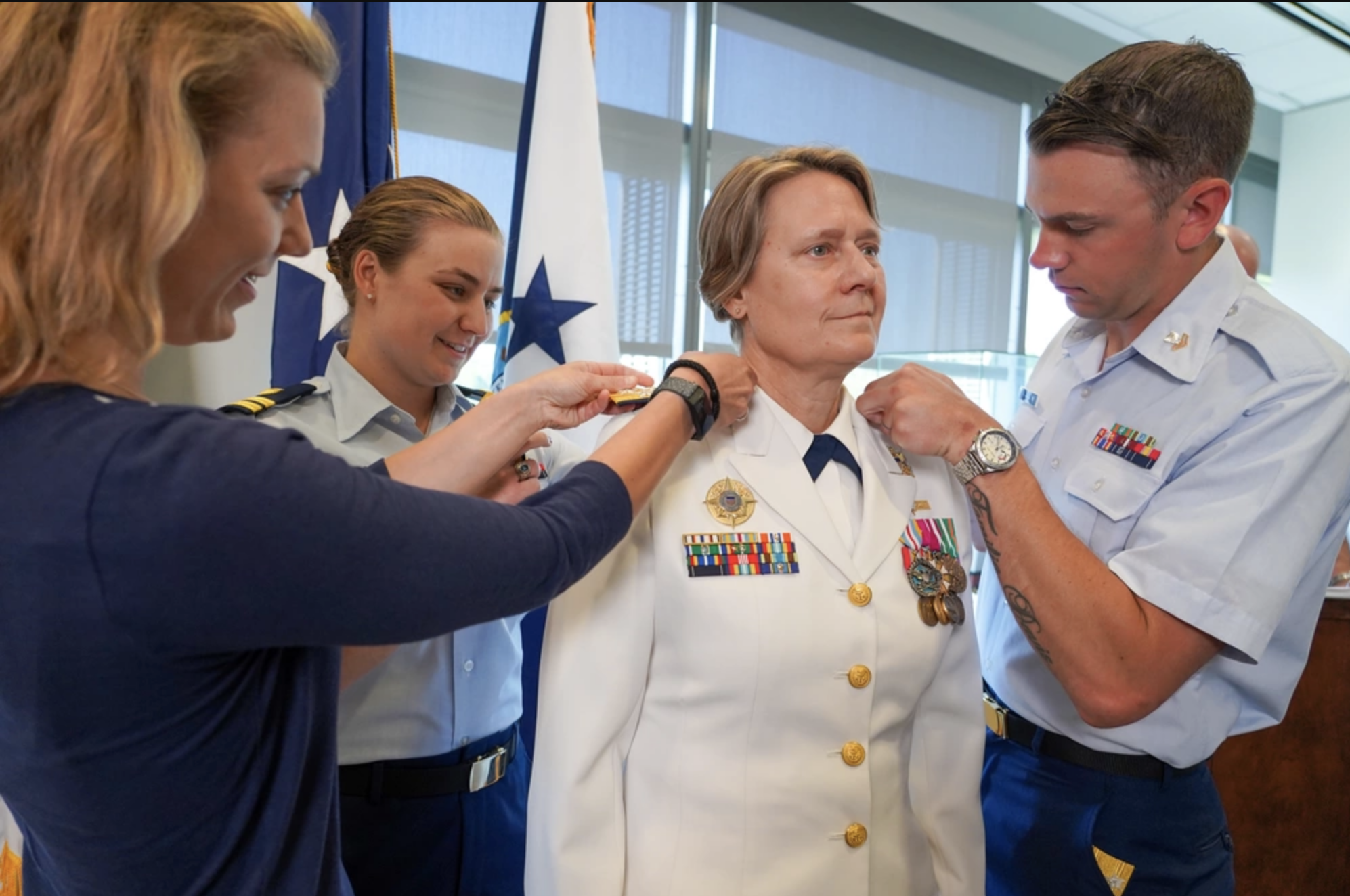First woman commandant of the U.S. Coast Guard questions service traditions
By Hal Bernton
During her 37 years in the Coast Guard, Commandant Adm. Linda Fagan has sometimes questioned service traditions. Why, for example, should most officers have to move to a new post every two to four years to help advance their careers? Such frequent changes can make it tough for those who want to lay down more roots in a community, or stay in one place to help boost a spouse’s career.
“My big red flag is when somebody says, ‘Oh we’ve always done it that way,’ ” Fagan said during a recent visit to the Coast Guard’s Station Cape Disappointment near the Columbia River mouth in Southwest Washington.
Fagan is the first woman commandant of the Coast Guard and the first to lead any branch of the U.S. Armed Forces. Fagan, who was sworn in June 1, takes charge during a period of transition as the Coast Guard undertakes a sweeping recapitalization of an aging fleet that includes bringing new icebreakers to Seattle, WA. Along with that effort, Fagan says she wants to focus on improving support and retention of Coast Guard personnel, especially women who leave the service at greater rates than their male counterparts.
For Fagan, that means updating personnel policies to improve “talent retention” and improving access to child care, health care and housing and other shoreside support for those who may serve up to 285 days a year at sea. “We need to make it easier for them to stay,” Fagan said.
The Coast Guard has a major presence in Washington state, with installations both in Puget Sound and the Pacific Coast. The Seattle base is home port to the nation’s only two operational seagoing icebreakers as well as other vessels involved in Pacific missions.
Station Cape Disappointment, visited by Fagan on Aug. 24, undertakes search, rescue and towing missions for commercial and recreational mariners and also hosts a lifeboat school that trains Coast Guard personnel for surf rescue operations.
For Fagan, Washington is familiar territory. After graduating in 1985 from the U.S. Coast Guard Academy, she was based in Seattle for two years while stationed aboard the Polar Star icebreaker on missions that took her to Antarctica and the Arctic. She then stayed on for another two years in Seattle to serve as marine safety officer — a position that involves inspecting vessels and investigating accidents. Nearly a decade later, she returned to Seattle in 1998 for a two-year University of Washington master’s degree program in marine affairs.
Chris Woodley, a retired Coast Guard captain who took a course with Fagan, recalls her organizational skills on a class project.
“She was able to get stuff done very quickly, assess what needed to happen and take care of business,” Woodley said.
These skills will be needed to help oversee a wide-ranging contracting program to construct new Coast Guard vessels, including the first new U.S.-built icebreaker since the 1970s. These efforts to modernize the fleet have not always gone well. A construction effort to develop new cutters launched in 2002, known as Deepwater, was plagued by cost, overruns, design flaws and other problems.
The first of the 460-foot Polar Security icebreakers was initially scheduled to be delivered by VT Halter Marine of Mississippi in 2024, but earlier this year, the Coast Guard announced the delivery would be delayed a year.
The challenge with the Polar Security cutter, Fagan said, is detailed design, which is critical to “delivering the quality and workmanship that you need on the other end.” That must be done before steel for the vessel is cut.
In preparation for the arrival of new icebreakers and likely other new vessels, the Coast Guard is proposing a renovation and expansion of its Seattle waterfront base. Three options are under consideration, including more than tripling the size of the base through the use of up to 54.1 acres at Terminal 46.
At Cape Disappointment, some of the fleet also is being renewed.
The 47-foot lifeboats used by the Coast Guard to respond to distress calls are being cycled through Bellingham-based All American Marine, for renovation that would enable another 20 years of use.
During her recent visit, Fagan made a brief boat trip around the Columbia River mouth aboard one of the vessels that had gone through the shipyard. She was joined on the flying bridge by Sen. Maria Cantwell, D- Wash., who through the years has been deeply involved in congressional oversight of the Coast Guard and championed Fagan’s nomination as a ” historic moment for our country and for women in the Armed Services.”
Back on shore, Cantwell and Fagan visited three 52-foot Coast Guard vessels unable to be renovated, which now sit on shore. The vessels, built in the 1950s, suffered a series of mechanical breakdowns that put crews at risk in the surf. So, a decision was made to pull them out of service, said Cmdr. Amanda Fisher, a Seattle-based Coast Guard external affairs officer.
Fisher said the Coast Guard would like to replace them if funding is available, then decommission the boats to be possibly offered to museums.
Fagan and Cantwell visited station housing that is vacant due to the risk of lead and asbestos exposures. With the problems too expensive to fix, the Coast Guard built new housing units across the Columbia River in Astoria, Oregon.
“This is the example of where we have been and don’t want to be again,” Fagan said. “There’s a gold standard of housing in Astoria. That’s where we need to be.”
* * * * *
Photo caption: Vice Adm. Linda L. Fagan is promoted to the rank of admiral during a ceremony at Coast Guard Headquarters. Fagan is the Coast Guard’s first woman to serve as a four-star admiral. (U.S. Coast Guard photo by Lt. j.g. Pamela Manns)

